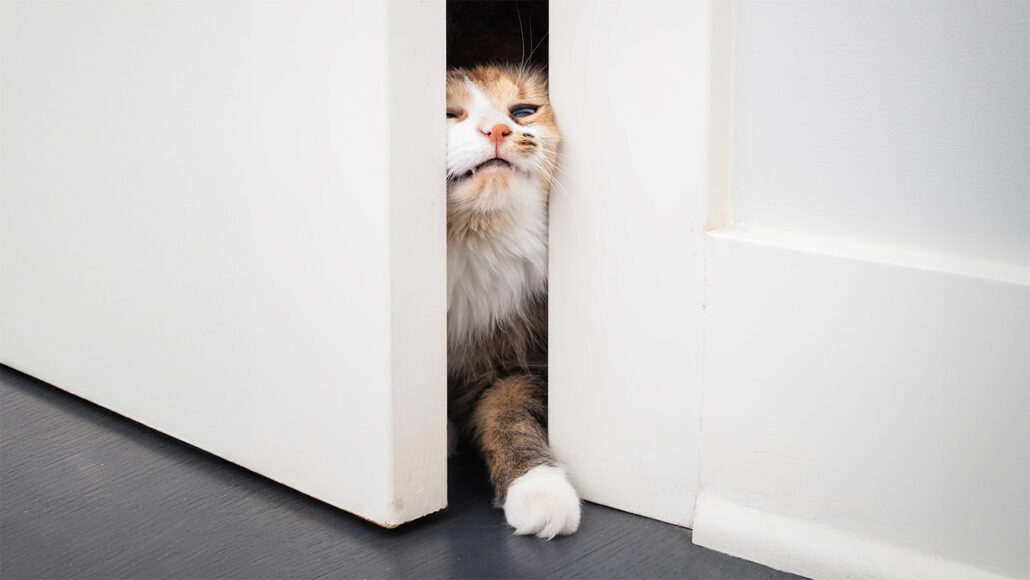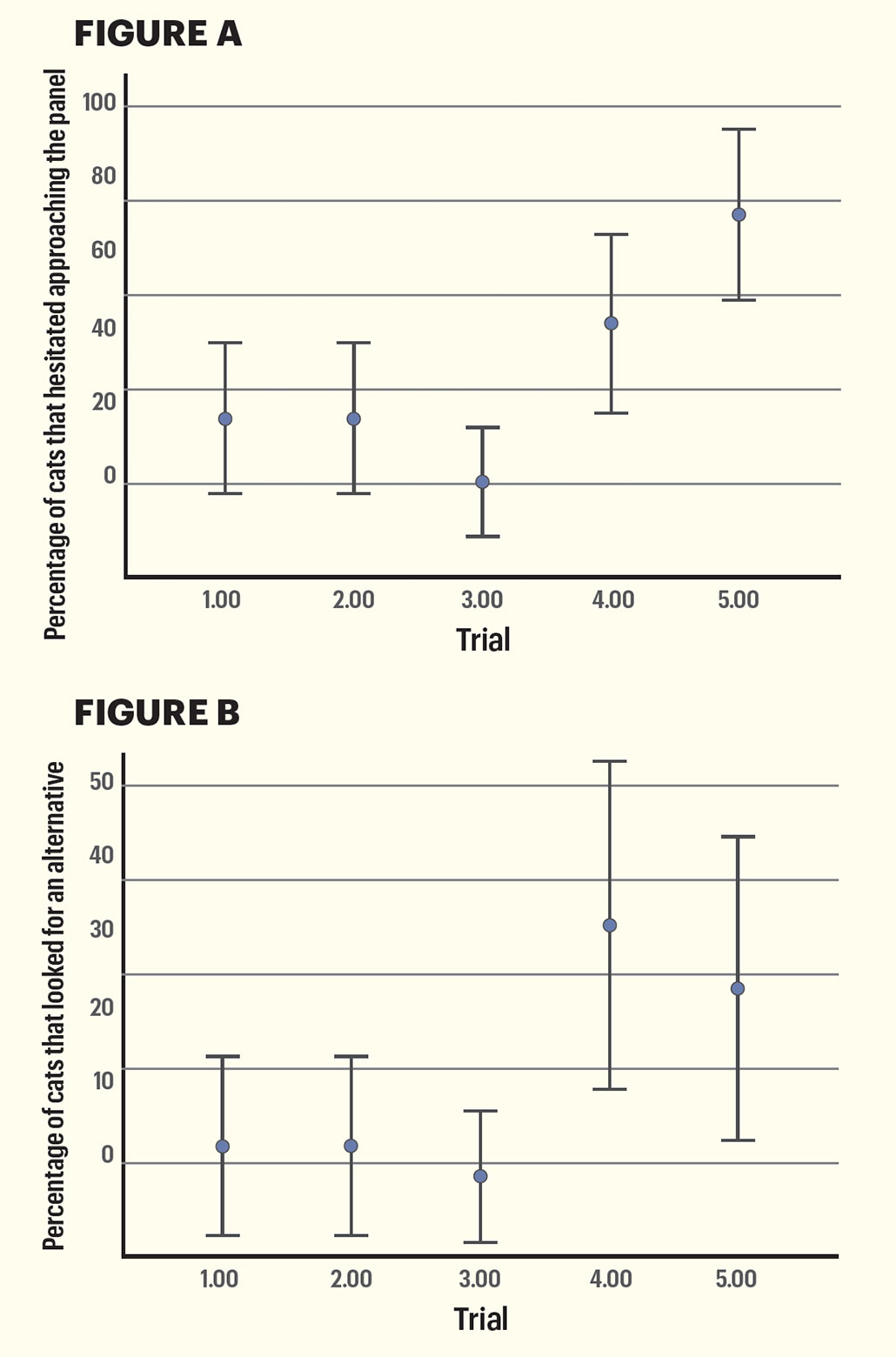Analyze This: When do cats move like liquids?
Cats’ hesitation before oozing through short openings suggests they have a sense of their body size

Cats' ability to pour themselves into containers and flow through tight spaces is well-documented. A new study is trying to understand how and why this quirk exists.
Petra Richli/Getty Images
Share this:
- Share via email (Opens in new window) Email
- Click to share on Facebook (Opens in new window) Facebook
- Click to share on X (Opens in new window) X
- Click to share on Pinterest (Opens in new window) Pinterest
- Click to share on Reddit (Opens in new window) Reddit
- Share to Google Classroom (Opens in new window) Google Classroom
- Click to print (Opens in new window) Print
By Carolyn Wilke and Andrea Tamayo
At times, cats seem to behave more like liquids than solids. They slip through crevices, squeeze under doors and fill containers of various shapes. A new study testing cats’ liquid-like behavior suggests that felines are aware of their body size. They likely gauge where they’ll fit and where they won’t.
Péter Pongrácz is a biologist who worked on the study. He’s based at Eötvös Loránd University in Budapest, Hungary. In his past research, Pongrácz had found that dogs hesitate before walking through uncomfortably small openings. This suggested that dogs rely on awareness of their body size to make decisions. And it got Pongrácz curious about whether cats do the same thing.
But cats are more difficult to test in the lab than dogs. Felines tend to get stressed out by new environments, Pongrácz says. So, he brought the lab to the cats. He took a portable lab to the homes of 29 cat owners.
In each home, his team attached one of two large cardboard panels to a doorframe. One panel had five holes of the same height but decreasing width. The other had five holes of the same width but decreasing height.
Once a cat oozed through the hole, the owner caught the pet and handed it over the panel to a researcher to start the next trial. Some cats hated being handled and evaded their owners’ hands at all costs, Pongrácz says.

Thirty out of 38 cats finished the experiment. When faced with holes of varying height, most cats hesitated to crawl through the shortest. But when the holes varied in width, only eight cats paused before flowing through even the narrowest slit. Pongrácz shared the findings September 17 in iScience.
In nature, this hesitation to crawl through short holes may be a survival strategy, Pongrácz says. Squeezing through a hole without seeing what’s on the other side could make a cat vulnerable to threats. The fact that cats pause before such openings even in the safety of their homes suggests that the animals imagine their body size while planning their approach.
Liquid cats quantified

Data Dive:
- Look at Figure A. What percentage of cats hesitated as they walked toward the tallest opening?
- What percentage of cats hesitated as they walked toward the shortest opening?
- Of the 30 cats in the study, how many did not hesitate when walking through the shortest opening?
- Look at Figure B. What percentage of cats looked for an alternative to squeezing through the shortest opening?
- What’s the difference in percentage of cats that looked for an alternative between the trials with the tallest and shortest openings?







